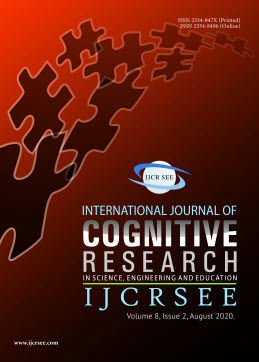HOW DO FIRST YEAR UNIVERSITY STUDENTS USE ICT IN THEIR LEISURE TIME AND FOR LEARNING PURPOSES?
HOW DO FIRST YEAR UNIVERSITY STUDENTS USE ICT IN THEIR LEISURE TIME AND FOR LEARNING PURPOSES?
Author(s): Ludvik Eger, Łukasz Tomczyk, Milan Klement, Mária Pisoňová, Gabriela PetrováSubject(s): Higher Education
Published by: Удружење за развој науке, инжењерства и образовања
Keywords: ICT competence; university students; social networks; mobile devices; leisure-time activities
Summary/Abstract: This study advances our understanding of the current use of social media and mobile devices by first year university students. This research sought to explore the influence of the use of social networks and new mobile devices by students for learning purposes. Data were collected using a self-report questionnaire at four universities in three countries in Central Europe. The research was completed by a sample of 961 full-time first year undergraduate students. The data were analysed using descriptive statistic and confirmatory factor analysis. The findings show that students who intensively use ICT for leisure-related tasks are also experienced in ICT for learning purposes. Furthermore, the results showed differences in the use of ICTs according to four selected areas: ICT for leisure-time activities, social networking, ICT on mobile phones, and ICT for study purposes by students. Five well-differentiated clusters were identified by through cluster analysis, which we term the ‘mobile subgroup’, ‘educational subgroup’, ‘social subgroup’, ‘network subgroup’, and ‘entertaining subgroup’. Educators can benefit from the results through a more complete understanding of how first year university students use social networks and mobile devices and how intensity in these areas influences ICT use for learning purposes.
Journal: International Journal of Cognitive Research in Science, Engineering and Education (IJCRSEE)
- Issue Year: 8/2020
- Issue No: 2
- Page Range: 35-52
- Page Count: 18
- Language: English

